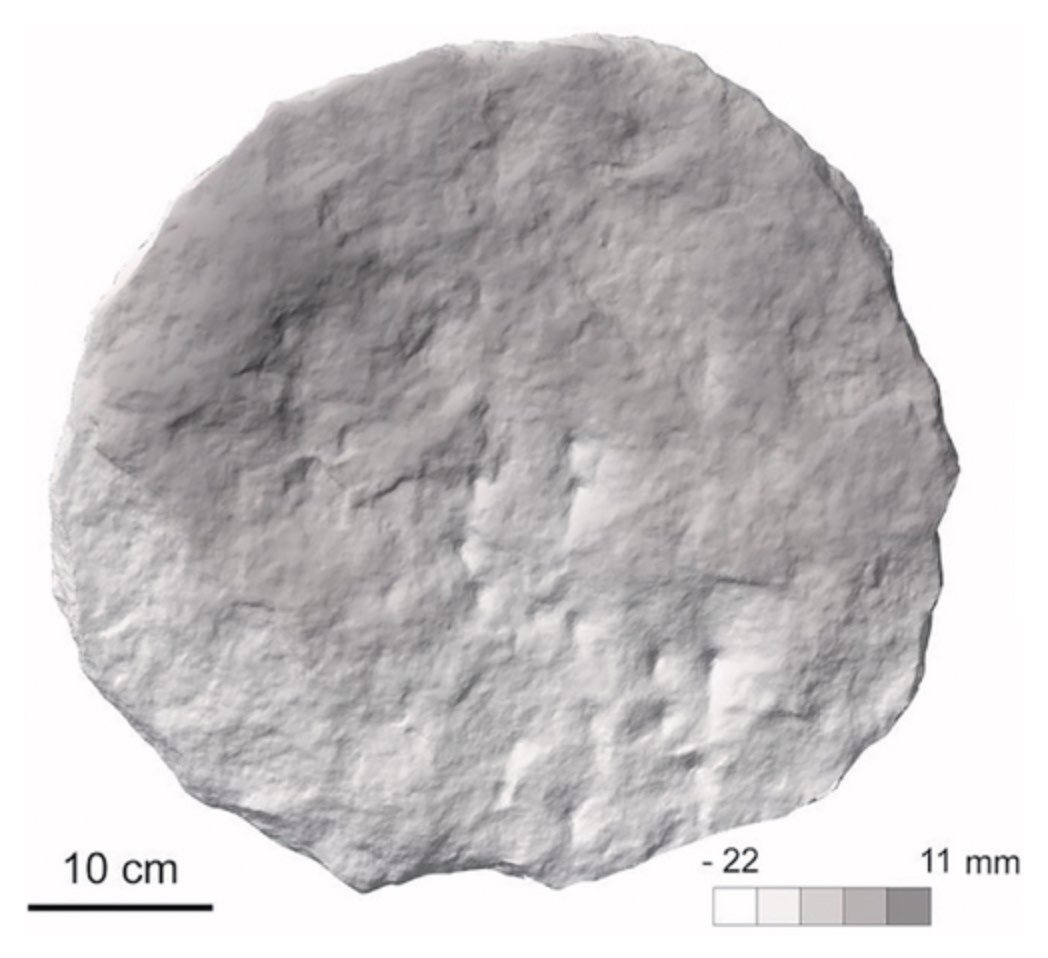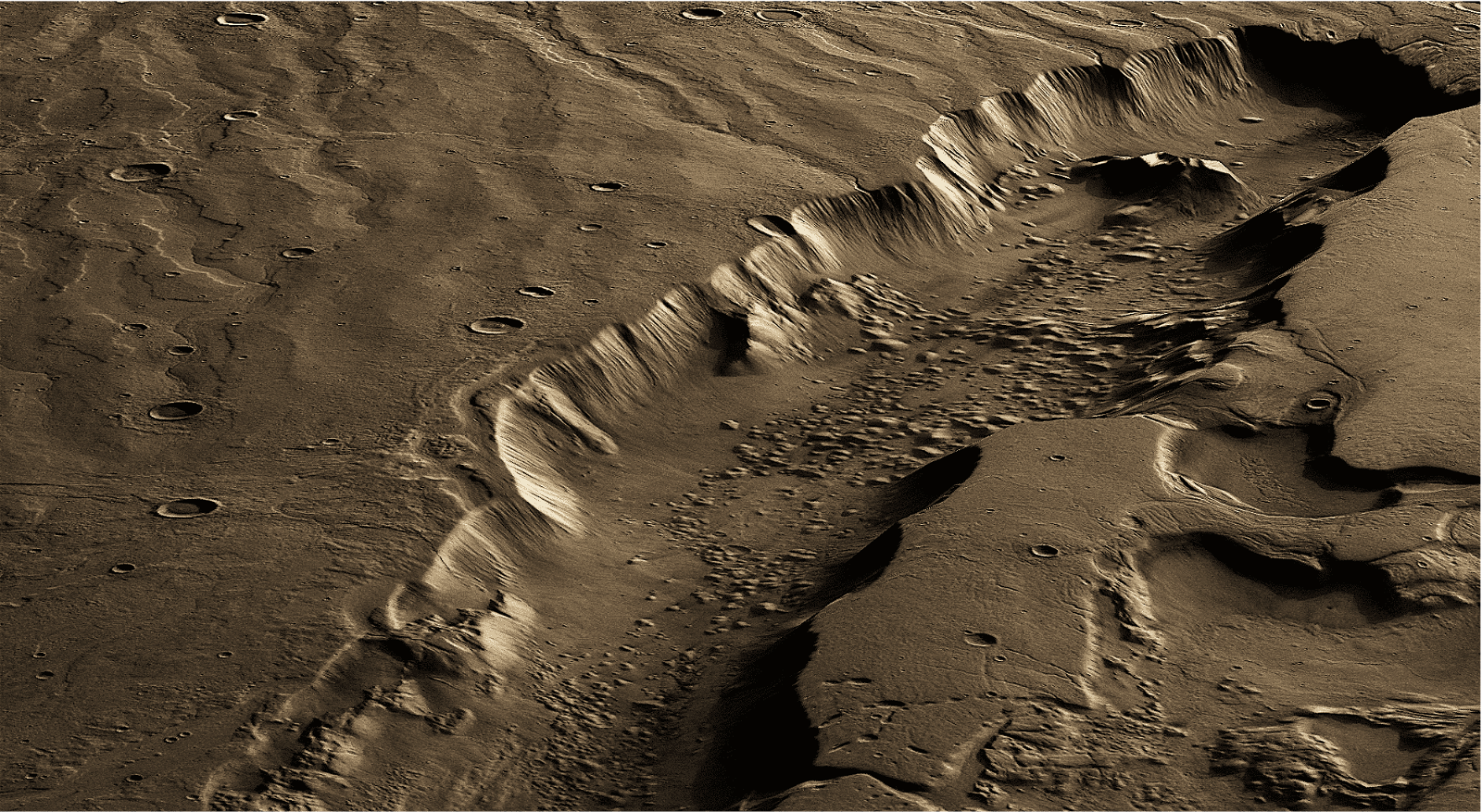A stone disk bearing peculiar markings could be an ancient star map representing one of the world’s oldest depictions of the night sky, according to recent findings that have prompted debate among experts.
The stone, which features close to 30 carvings on its front and back, was found several years ago near the ancient Rupinpiccolo protohistoric hill fort in northeastern Italy. According to research published in the journal Astronomical Notes, the markings may indicate the locations of the brightest stars that were visible to the ancient night sky observers who carved it at least as far back as 2,400 years ago.
The Enigma of Rupinpiccolo’s Curious Stone Disks
Located close to the border between northwestern Italy and Slovenia, the sprawling ruins of the castelliere of Rupinpiccolo were first documented toward the end of the 19th century. A massive ancient defense structure protected by huge, seven-meter-wide ramparts, archaeological excavations did not occur there until almost a century after its initial discovery.
Along with the stones used in the fortification’s construction were smaller, round stone artifacts that were later discovered in the collections sent to the Museo Archeologico Nazionale di Aquileia.


Among the rounded artifacts, a pair of limestone disks were discovered close to the southeastern entrance of the castelliere. Although one of the disks bears no markings, the other is covered in a crude pattern of chiseled etchings, the meaning of which remained a puzzle at the time the disks were discovered.
Now, according to Paolo Molaro, an astronomer and former director of the Astronomical Observatory of Trieste, and archaeologist Federico Bernardini with the Abdus Salam International Centre for Theoretical Physics at Trieste, Italy, nine of the 29 markings on the enigmatic stone appeared to be good matches for constellations that would have been visible in the sky at the time they were carved.
“Nine marks are found to match the Tail of Scorpius and five the Orion’s Belt, together with Rigel and Betelgeuse,” Molaro and Bernardini write in their recent paper. Additionally, nine of the etchings on the same side of the stone appear to be a close match for the location of the Pleiades, while on the artifact’s opposite side, there are a series of marks the researchers associated with Cassiopeia.
The stone’s markings, according to Molaro and Bernardini, are consistent with how constellations like Scorpius and Orion would have appeared in the night sky during the period the fort was constructed, which is believed to have been sometime between 1800 and 400 BCE.
Altogether, 28 markings covering the stone “show a Pearson correlation coefficient with stellar positions higher than 0.99,” denoting the correlation coefficient used by statisticians to measure linear correlations between two data sets, adding that the probability of a wrong correlation is “lower than 0.001.”
An Unidentified Celestial Object in an Ancient Star Map?
However, there are other markings on the back side of the stone that are not as easily identifiable with known celestial features.
“One mark slightly North of Orion cannot be identified,” the researchers write, admitting that this solitary unidentified marking “challenges the whole picture.”


As a possible solution, they conclude that this out-of-place celestial feature, if that is indeed what it would have represented to its carvers thousands of years ago, “could have been the progenitor of a failed supernova, thus offering also the possibility of a verification.”
While the authors present several compelling possibilities in their paper, the argument that the Rupinpiccolo stone may represent one of the world’s oldest star maps has received pushback from other experts.
Ancient Star Map or Speculation?
Dr. Ed Krupp, Director of the Griffith Observatory, is regarded as a leading expert in the discipline of archaeoastronomy, which studies the intersection of archaeology and astronomy through research into how ancient cultures viewed the sky. Recently, Krupp had already expressed doubts about the argument Molaro and Bernardini present in their paper.
“The authors’ own remarks inform us the matches between marks on the stone and stars in the sky are not very good, despite their assertion of Pearson correlation coefficient support for the notion,” Krupp told The Debrief in an email. “I am not able to argue about the statistical case here, but I don’t think it is either necessary or relevant.”
“The statistical argument suggests something is there that doesn’t really seem to be there, and that can happen with such analyses,” Krupp added.
Responding to Dr. Krupp’s assertions, Molaro told The Debrief that he felt Krupp’s assessment of their research “does not go into the merits of the statistical analysis on which the result is based” and that beyond this aspect of their paper, he and Bernardini have offered more than just statistical results as evidence for their conclusions.
“Why on earth do the asterisms of Orion and the Scorpion’s tail have the same scale despite having been reproduced at different times?” Molaro said. “Why do they have the same orientation in the sky? How come they are complete for all and only the brightest stars?”
“Why are only the most popular asterisms and those traditionally found in many of the planet’s cultures reproduced?” Molaro added. “We have indicated a possible explanation supported by statistics and further considerations.”
While Krupp concedes that several of the chisel marks do resemble star patterns that are present in the constellations of Orion and Scorpius as Molaro contends, he also points out that there are a few outliers beyond the unexplained marking that the authors themselves say they could not match with any known celestial object.
“In the Scorpius marks, there are at least four marks that don’t match any of the brighter stars, which seems odd,” Krupp told The Debrief. “And you would expect that Antares, not only the brightest star in Scorpius but one of the brightest stars in the sky, would be unambiguously marked. It isn’t.
“There are two stars that could represent a misplaced Antares, but why is that? It’s actually a problem.”
“If we have a representation of a key piece of the real estate of Scorpius, Antares should be obvious,” Krupp said.
The Debate—and the Science—Continues
Although Krupp raised several points of contention with the findings Molaro and Bernardini present in their paper, he conceded that “a rather robust statistical argument is made for the chisel marks matching actual formations of stars in the sky,” though maintaining Molaro and Bernardini’s resulting assessment “doesn’t really square with what just looking at the disk reveals.”
“It is fair to say the paper is a serious study,” Krupp contends. “It provides plenty of disciplined archaeological context and makes the data and the method of analysis very clear. I don’t have any quarrel with the authors’ serious intent.”
“I believe, however, the possibility of celestial representations in the chisel marks was just too tempting for them.”
Given Krupp’s position on their findings, Molaro told The Debrief that, to an extent, he could understand some of the pushback he and Bernardini have received from the archeoastronomy community.
“It does not surprise me that, considering the total absence of information on the cultural level of these populations who inhabited the hillforts between 2000-400 BC, the discovery could raise many doubts in astro-archaeology circles,” Molaro said, though maintaining that the unique features on the disk point to the significance it must have had to its makers.
“The fact remains that the pair of discs found near the entrance to the castle were made by human hands and not natural and must have had a particular meaning for these populations,” Molaro said.
“The incisions on one of the discs are not random or made to flatten the stone as their distribution demonstrates.”
“So they also had a special meaning,” Molaro said.
Despite the pushback he has offered on Molaro and Bernardini’s paper, Krupp shares the authors’ interest in the potential identification of asterisms in ancient rock art, a subject which Krupp says he is presently exploring in a new paper he soon plans to publish. However, at the end of the day, Krupp maintains that a compelling argument will require more than just similarities.
“We need more than similar patterns,” Krupp told The Debrief.
“We are pattern-seeking creatures, but we are not always rigorous in our efforts to determine whether the patterns we see are meaningful.”
“That goes beyond how well they match,” Krupp said.
Molaro and Bernardini’s paper, “Possible stellar asterisms carved on a protohistoric stone,” appeared recently in Astronomical Notes and can be read in its entirety here.
Micah Hanks is the Editor-in-Chief and Co-Founder of The Debrief. He can be reached by email at micah@thedebrief.org. Follow his work at micahhanks.com and on X: @MicahHanks.

